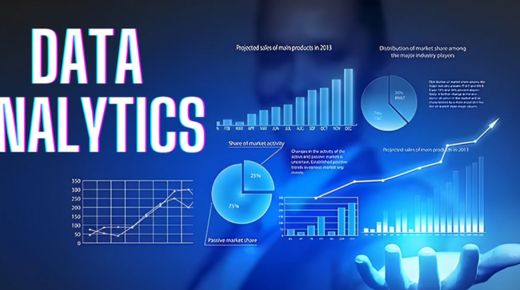In today’s fast-paced business environment, organizations are increasingly turning to data analytics as a strategic tool to enhance innovation and drive growth. The ability to harness vast amounts of data and derive actionable insights has become essential for companies aiming to maintain a competitive edge. This article explores the significance of data analytics in fostering innovation and facilitating sustainable growth across various industries.
Understanding Data Analytics
Data analytics refers to the systematic computational analysis of data sets to discover patterns, correlations, and trends that can inform decision-making. By employing advanced statistical techniques and tools, businesses can convert raw data into valuable information, thereby enabling more informed strategic choices. With the rapid evolution of technology, data analytics has transcended traditional methodologies, incorporating machine learning, artificial intelligence (AI), and big data solutions.
Enhancing Decision-Making Processes
One of the primary roles of data analytics in driving innovation is its ability to enhance decision-making processes. By providing leaders with real-time insights and predictive analytics, organizations can make data-driven decisions rather than relying on intuition or past experiences. For instance, companies can analyze customer behavior data to identify trends and preferences, allowing them to tailor their products and services to meet market demands effectively.
Moreover, data analytics can mitigate risks by enabling organizations to forecast potential challenges and opportunities. Businesses that leverage analytics can adapt their strategies swiftly in response to changing market conditions, ensuring they remain relevant and competitive.
Fueling Innovation through Customer Insights
Data analytics plays a crucial role in fostering innovation by offering deep insights into customer needs and preferences. Understanding the customer journey, from initial awareness to post-purchase behavior, allows organizations to develop innovative solutions that cater to specific pain points. For example, e-commerce platforms analyze user data to personalize shopping experiences, recommending products based on individual preferences and previous purchases.
Furthermore, organizations can utilize data analytics to conduct A/B testing and gather feedback on new product features or marketing campaigns. By systematically evaluating the results of different approaches, companies can refine their offerings and innovate continuously, ultimately enhancing customer satisfaction and loyalty.
Streamlining Operations and Improving Efficiency
In addition to driving innovation, data analytics is instrumental in streamlining operations and improving overall efficiency. By analyzing operational data, organizations can identify inefficiencies, bottlenecks, and areas for improvement. For example, manufacturing companies can use predictive analytics to optimize supply chain management, minimizing waste and reducing production costs.
Moreover, data analytics can enhance workforce productivity by providing insights into employee performance and engagement. Organizations can analyze workforce data to identify high-performing teams, understand skill gaps, and develop targeted training programs, leading to a more effective and innovative workforce.
Driving Strategic Growth Initiatives
Data analytics also plays a pivotal role in driving strategic growth initiatives. By leveraging market analysis and competitive intelligence, organizations can identify new business opportunities and expansion strategies. For instance, financial institutions utilize data analytics to assess market trends and customer preferences, enabling them to develop tailored financial products that cater to specific demographic segments.
In addition, companies can leverage analytics to enhance their marketing strategies. By analyzing customer segmentation and behavior, businesses can design targeted marketing campaigns that resonate with their audience, ultimately driving sales and growth. Data-driven marketing approaches allow organizations to allocate resources more effectively, maximizing return on investment (ROI).
Conclusion: Embracing a Data-Driven Culture
As the role of data analytics continues to expand, organizations must embrace a data-driven culture to fully harness its potential for innovation and growth. This requires investment in the right technologies, tools, and talent to analyze and interpret data effectively. Additionally, fostering a culture that values data-driven decision-making across all levels of the organization is essential for maximizing the benefits of analytics.
In conclusion, data analytics is not just a tool but a critical driver of innovation and growth in today’s business landscape. By leveraging insights derived from data, organizations can enhance decision-making processes, fuel innovation, streamline operations, and drive strategic growth initiatives. As businesses navigate an increasingly complex environment, those that prioritize data analytics will be better positioned to thrive in the face of uncertainty and competition.

